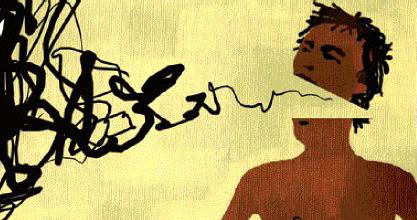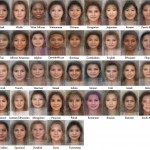… And Green Clovers?
It’s easy and sometimes even required in politics to categorize peoples into very simplistic groups. Otherwise it would be difficult to sufficiently demonize whole swaths of the population.
Given its rather binary racialized history, the USA is a nation that is used to clumping minorities by general skin color, rather than ethnicity. Black = black. Yellow or similar epicanthic fold = Asian. Brown = Latino. Brown w/beard = Muslim = Middle Eastern. Red = dead.
There was a time that differences among white people, ie their European ancestry, made a real difference in the body politic of the USA. Italians or southern Europeans stood in contrast to English or eastern European immigrants. Those days have largely passed; mostly culinary differences remain, along with other exaggerated and benign differences (ex. Italians talk with their hands).
Pockets of this-or-that non-white or black ethnicity didn’t move the needle until they started growing in population in the 20th century. But such is the way our country was set, that this increasing diversity has proved to be difficult to categorize and understand by the elite classes.
In the early 20th century, American newspapers were all atwitter over the Dusky Peril:
The negative characterization of ethnic communities that was rampant at the turn to the twentieth century — Sikh immigrants were accused of stealing jobs and even for the emerging use of marijuana in the west during that period — can’t be ignored in how these communities were mistreated.
Though, ostensibly, there is reason other than racial/ethnic discrimination that can be identified as the motive in both acts of violence, a necessary question is warranted around whether the incidents would have been violent, or would have occurred at all, had the victims not been from ethnic communities, and more, whether this tendency is just a relic of the past.
All Sikhs are just Hindus, right? Not exactly. In a similar vein, a Sikh friend of mine once told me how he has often been mistaken for Muslim. By other Muslims, specifically middle eastern Muslims. I told him I don’t understand how a Sikh turban can be seen as a Muslim affectation by other Muslims. They ought to know their own brethren. To my eye, middle eastern head-gear is very different from a Sikh turban. Yet it is their fellow South Asians, not Middle Easterners, who can most often tell them apart.
In a similar vein, a Sikh friend of mine once told me how he has often been mistaken for Muslim. By other Muslims, specifically middle eastern Muslims. I told him I don’t understand how a Sikh turban can be seen as a Muslim affectation by other Muslims. They ought to know their own brethren. To my eye, middle eastern head-gear is very different from a Sikh turban. Yet it is their fellow South Asians, not Middle Easterners, who can most often tell them apart.
Categorization, in and of itself, isn’t racist or prejudiced provided the person doing the categorizing is aware of its limits. I ain’t an expert but I get that among Indians, South and North are very different; that Persians and Arabs can have differences other than Shi’a or Sunni; that there are even finer differences between Arabs of different geographic persuasions and that Bengalis are superior to every group on this little planet.
The problem, of course, is that the mainstream American media, be it Fox, MSNBC, ABC or CNN, continue to struggle badly at tying together often discordant and complex storylines. There are powerful tribal, historical, religious and/or cultural rationales for why certain groups behave the way they do. Just as Europeans are not a monolithic group, neither are Muslims or Hindus or Asians or Africans.
Life ain’t black or white. Sometimes it’s not even simply brown.




